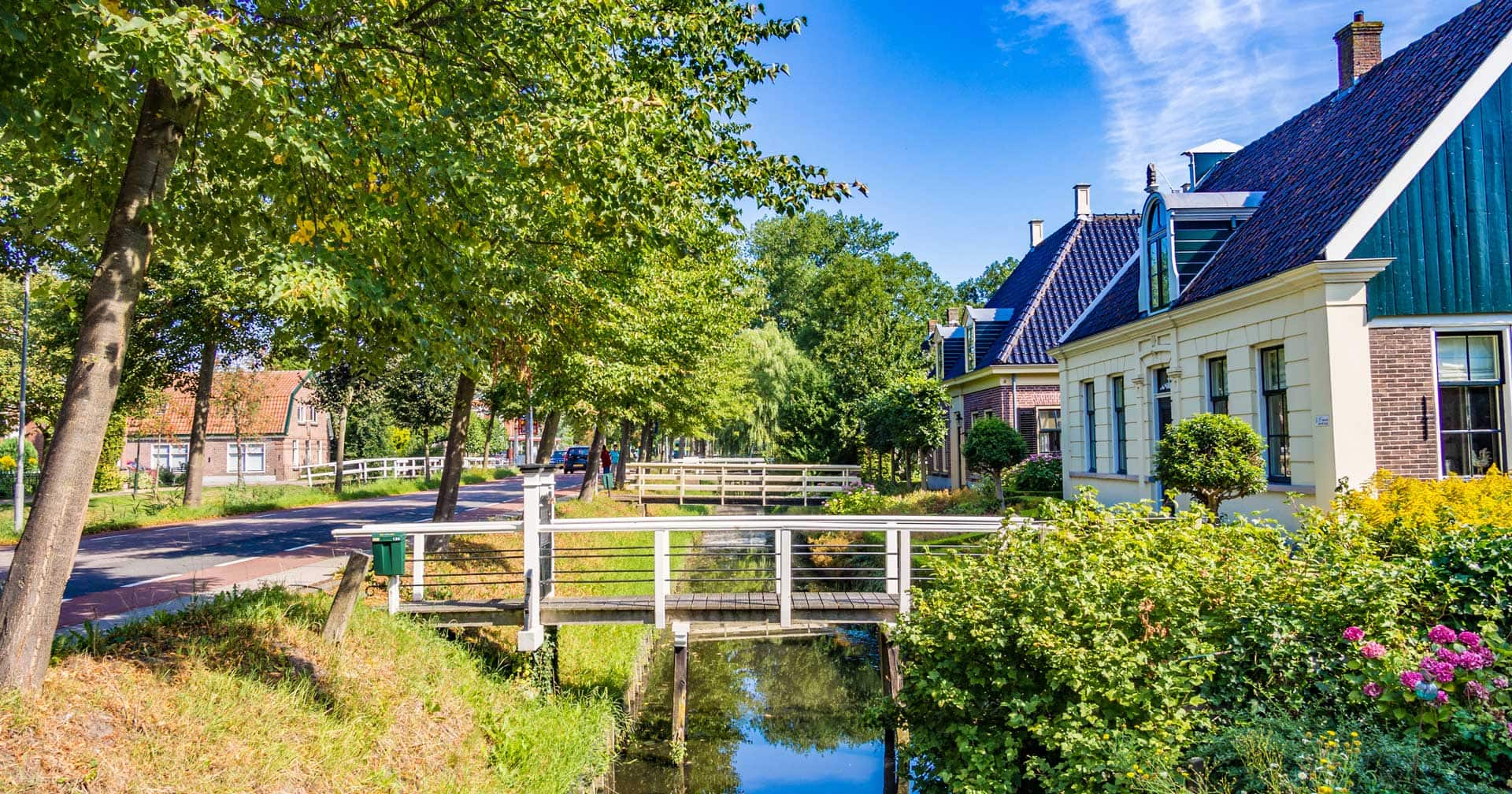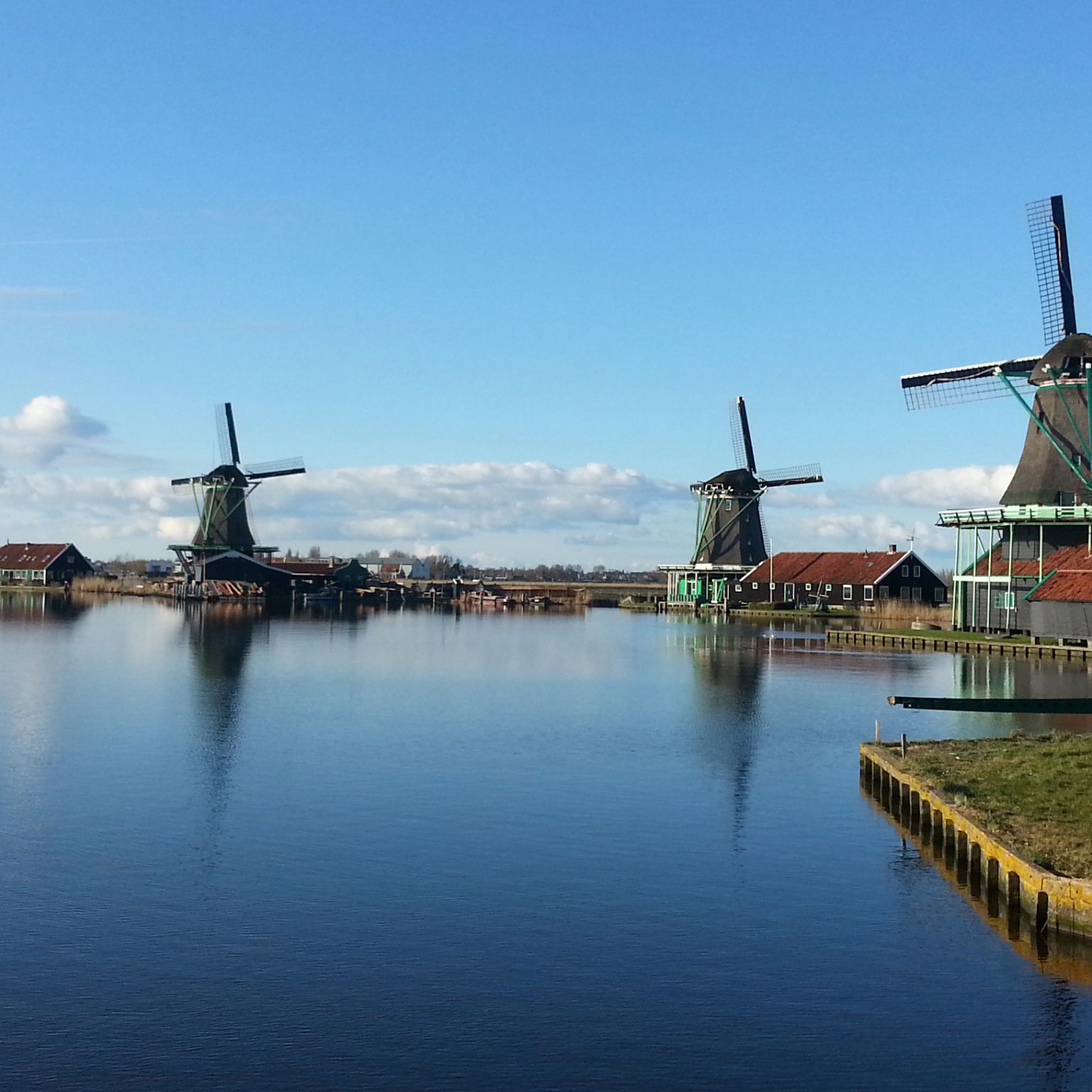/GettyImages-1084315292-5c2d1fc246e0fb0001f5bb8f.jpg)
How the Netherlands Reclaimed Land From the Sea
Holland has many polders and reclaimed land areas, such as the Beemster and Schermer, and even created an entirely new province, Flevoland, by reclaiming a huge stretch of water. Today, people live there in modern cities and on what used to be islands. You will find fields full of colorful tulips and huge natural landscapes with untouched nature.

UNESCO orld heritage, Beemster Polder (reclaimed land), near Middenbeemster, North Holland (NL
Aug 27, 201210:10 AM. Horace Dediu's presentation on the history of Amsterdam features the amazing land reclamation map above. Utrecht, which is now inland, used to be a port. And Amsterdam is.

Map of reclaimed land in the Netherlands [750x932] r/MapPorn
The Dutch have a saying: "God created the world, but the Dutch created the Netherlands". Today we will see why.Patreon: https://www.patreon.com/AveryThingSoc.

Amsterdam (Ijmuiden), Netherlands The First Reclaimed Land Excursion Norwegian Cruise Line
Latest update: September 6, 2023 It seems impossible that a country below sea level can exist. However, The Netherlands lies in the middle of a delta of three major rivers on land, mainly below sea level. So, how much of The Netherlands is actually under sea level?

Exploring Holland's charming Polder Country SFGate
Aalsmeer, Netherlands Learn how the Dutch reclaimed land by building dams and dikes to section off the shallow sea, then used windmills to drain the land. The result is fertile farmland, good for the tulip industry, which we see in action at Aalsmeer's flower auction. keywords Environment Contemporary Netherlands YEAR PRODUCED 2013 CATALOG NUMBER

Reclaimed polder land in Holland Stock Image C023/5237 Science Photo Library
Holland is reclaimed land: once at the mercy of the ocean, and alternately land, islands, sea and swamps, it wasn't until the Dutch began to hold the sea at bay with intricate arrangements of dikes that it became stable. The result is a flat country, patch worked with dikes and criss-crossed with canals, with the horizon visible and perfectly.

Dutch Land Reclamation r/MapPorn
On February 1, 1953, another devastating flood hit the Netherlands. Caused by a combination of a storm over the North Sea and spring tide, waves along the sea wall rose to 15 feet (4.5 meters) higher than mean sea level. In some areas, the water peaked above existing dikes and spilled upon unsuspecting, sleeping towns.

See how Holland reclaimed land Holland Windmills
Three stages in the historical development of land drainage and reclamation activities are presented. The first stage was in the sixteenth and seventeenth centuries when many lakes north of Amsterdam were drained and reclaimed for agricultural use. Windmills were used to pump these lakes dry. Next, in the nineteenth century, Lake Haarlem became.

Dutch land reclamation efforts Vivid Maps
Land reclamation in the Netherlands has a rich history. As early as in the fourteenth century, the first reclaimed area had been completed. More petite strips of land were reclaimed by filling them with sand or other ground materials. It was usually done close to the cities and harbor areas.

Peat polders and reclaimed land hires stock photography and images Alamy
In Holland reclaimed land makes up for more than a third of the land. So how does that work? Well, a long time ago Holland consisted largely of peat bog. Then the Dutch started digging this peat up bit by bit, for fuel and salt. The mining was done in long strips, creating narrow meadows with ditches between them.

Reclaimed Land Exploring Holland on a Hotel Barge European Waterways
"There were food shortages in World War I, and Holland wanted food independence," said Evert van der Horst, chief engineer at a station near Lelystad that drains the reclaimed land.

UNESCO world heritage, Beemster Polder (reclaimed land), near Middenbeemster, North… Unesco
Reclaimed land is found in North Holland, South Holland, and the western part of Utrecht. The lands are drained peat wetlands that have formed as a result of large-scale peatification. The first reclamation involved the Beemster in 1612. The peat lakes were drained as they jeopardised the cities in the surrounding peat area.

The Dutch Land Reclamation The Most Incredible Infrastructure Project in History YouTube
Around 17% of the country's current land area has been reclaimed from the sea or lakes. You can see a gif of this process below: And here's a map showing during what time period each area was reclaimed: Here are a few more facts about land area of the Netherlands: 26% of its area is located below sea level.

aerial view Reclaimed land. Anna Jacobapolder en Willempolder, Sint Philipsland, Tholen, Zeeland
The Zuiderzee Works ( Dutch: Zuiderzeewerken) is a system of dams and dikes, land reclamation and water drainage work, which was the largest hydraulic engineering project undertaken by the Netherlands during the twentieth century.

Reclaimed Land Netherlands High Resolution Stock Photography and Images Alamy
Land reclamation, usually known as reclamation, and also known as land fill (not to be confused with a waste landfill ), is the process of creating new land from oceans, seas, riverbeds or lake beds. The land reclaimed is known as reclamation ground, reclaimed land, or land fill .
.jpg?1554388676=)
Groepsreizen Giethoorn, Enkhuizen and reclaimed land Koninklijke Beuk
The geography of the European Netherlands is unusual in that much of its land has been reclaimed from the sea and is below sea level, protected by dikes. It is a small country with a total area of 41,545 km 2 (16,041 sq mi) [1] and ranked 131st.